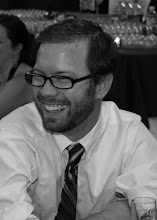In 1997 Smithsonian Folkways re-released the Anthology of American Folk Music, Harry Smith’s official bootleg of 78 rpm folk records. Originally released in 1952, the collection gets much credit for fostering the folk boom of the 1950s and 60s.
The 1997 release was a music-altering event for me, and the ensuing years witnessed a blue grass revival, and the unanticipated success of the O Brother, Where Art Thou? soundtrack.
I called this a music-altering event because the Anthology changed the way I listen to American music. Though the performers were segregated, the influences were not. If we are right to question whether American society is truly a melting pot, the Anthology suggests that musically we are far more connected and harmonious than we are socially. I make this assertion based solely on the ease with which the collection’s white and black music, as well as secular and religious, vocal and instrumental, old timey, Acadian, blues and gospel songs follow one another, reference each other and ultimately create a soundtrack of American music that no one single artist or even genre could.
The Anthology introduced me to a bizarre world of coo coo birds, lizards in the spring, murderers, folk heroes, unrequited love, unimaginable buffoonery, kitchen sweats, and near psychedelic religious fervor. It is not much of an exaggeration to say that after buying my copy, I listened to little else for the following six months.
It’s been a long time since a single collection of disparate artists has aroused such excitement and devotion (though the all-too brief Sock It To ‘Em Soul came close). This week, however, I picked up the Impulse Records retrospective The House that TRANE Built: The Story of Impulse Records, and cannot help think I’ve stumbled into something.
When it comes to jazz I am squarely in the novice camp. Over the years my small collection has grown slowly and deliberately. I suppose I lean a bit more towards the experimental than the traditional, and prefer instrumental to vocal, though I am not hardened on these preferences.
The first time I truly connected with jazz came riding the subway in Boston, where I found myself listening to John Coltrane’s Stellar Regions. At the time the closest thing I might have compared it to was Sonic Youth, but in retrospect that doesn’t fit. What finally turned me on was the way the music in my ears corresponded with the erratic movements of the crowded underground environment. The crisscrossing of commuters into different trains and the brusqueness of the announcers all seemed determined to fly apart from each other were it not for subway’s pervasive rumblings holding it all together.
I cannot claim I was hooked, but soon after, Blue Train muscled its way into my steady diet of indie rock and pop and I started to learn how to listen. It wasn’t difficult, it was just different. Trips to Wally’s Café and Top of the Hub followed, as did recordings by Stan Getz and Joao Gilberto. In Seattle we saw Ray Brown at Dimitriou's Jazz Alley. Since moving to Denver I try to hit El Chapultepec after each Rockies game I go to, have the Jazz Cabbie on my phone list, and have come to appreciate the likes of Cal Tjader and Howard Rumsey.
But I always go back to John Coltrane.
And that is why the Impulse Records collection is so exciting. Its four discs and 38 songs include plenty of Coltrane – the label’s hub and resident master, as well as household names such as Count Basie and Charles Mingus. For the most part, though, the artists here are either new to me, or I ones with which I had only a passing familiarity. Some reviewers complain about the narrow scope of the collection, or that it relies too heavily upon the personal taste of its compiler, Ashley Kahn, author of a companion history of the label. For me, the novice, I am satisfied.
Out of the gate I am quite smitten with Chico O'Farrill & Clark Terry’s Latin-soul concoction “Spanish Rice,” as well and the rhythms of Gabor Szabo’s “Gypsy Queen.” I no longer think of Alice Coltrane simply as John’s wife, as her “Journey in Satchidanada” begins with a pensive drone that builds into something more transcendent, indescribable. Meanwhile, Albert Ayler’s “Our Prayer” seems, to these ears anyway, to pit a ragtime dirge against something baroque before uneasily reconciling the two.
My favorites, however, come with the one-two punch of Shirley Scott’s “Rapid Shave” and “Mama Too Tight” by Archie Shepp. Both of these jazz-soul groovers march to a loose and confident swagger capable of shaking loose the stiffest of figures or chasing away all but the fiercest blues.
Not a bad way to spend an evening.
Saturday, June 24, 2006
Subscribe to:
Comments (Atom)
